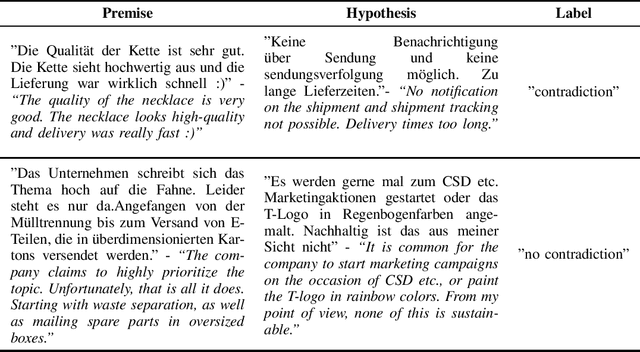A Linguistic Investigation of Machine Learning based Contradiction Detection Models: An Empirical Analysis and Future Perspectives
Paper and Code
Oct 19, 2022

We analyze two Natural Language Inference data sets with respect to their linguistic features. The goal is to identify those syntactic and semantic properties that are particularly hard to comprehend for a machine learning model. To this end, we also investigate the differences between a crowd-sourced, machine-translated data set (SNLI) and a collection of text pairs from internet sources. Our main findings are, that the model has difficulty recognizing the semantic importance of prepositions and verbs, emphasizing the importance of linguistically aware pre-training tasks. Furthermore, it often does not comprehend antonyms and homonyms, especially if those are depending on the context. Incomplete sentences are another problem, as well as longer paragraphs and rare words or phrases. The study shows that automated language understanding requires a more informed approach, utilizing as much external knowledge as possible throughout the training process.
 Add to Chrome
Add to Chrome Add to Firefox
Add to Firefox Add to Edge
Add to Edge